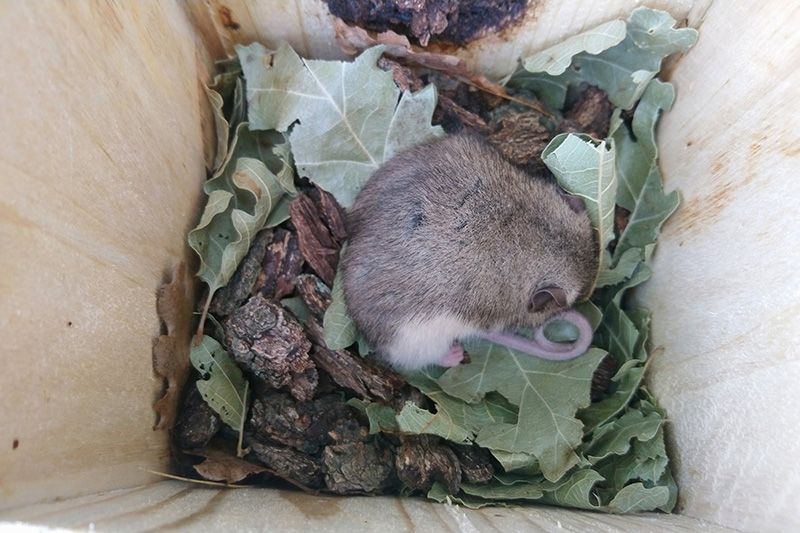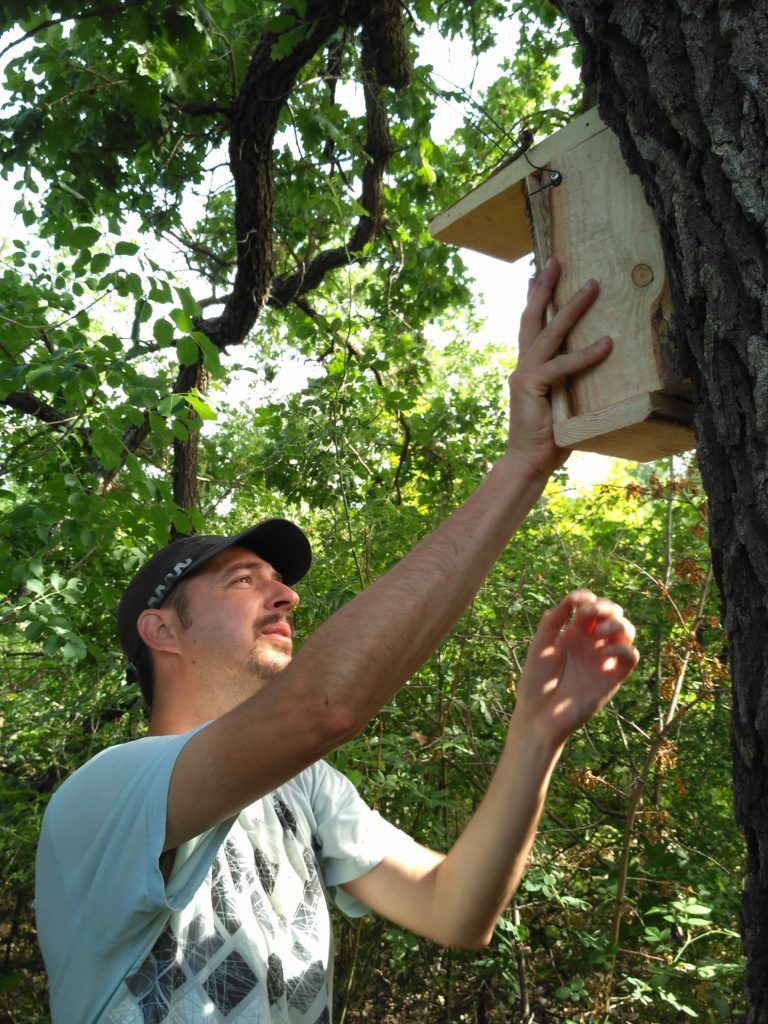Saving the little-known Roach’s mouse-tailed dormouse

At the moment nothing is known about the daily and seasonal activity patterns of the Roach's mouse-tailed dormouse, nor their population numbers, their diet or potential threats.
Funding for this project has now finished
The problem
Roach’s dormouse (Myomimus roachi) is one of the least-known and rarest rodents in Europe. They are only found in the western part of Turkey and southeast Bulgaria. Despite many searches over the past few years, only a handful of individuals have been found at three sites.
Unlike hazel dormice, Roach’s dormice are found in more open landscape, in the hedgerows and small copses that are found along the edges of cereal and sunflowers fields and near vineyards.
Worryingly, during the last few decades, the vast majority of its potential habitat has been converted to intensive agriculture, and the remaining areas are severely fragmented.
The solution
PTES is funding Nedko Nedyalkov and his team, to learn more about the biology and ecology of this elusive animal. With support from The Habitat Foundation in the Netherlands, they are hoping to discover what habitat they prefer, what they feed on and where they hibernate.
In the summer of 2017, the first mouse-tailed dormouse was captured in Bulgaria for 40 years. It was caught in the Sakar mountains, in semi-open grassland area with shrubs, scattered old oak and pear trees. In the neighbouring Turkish region, the species occurs in similar habitats. Nedko suspects that these are their preferred habitats, rather than the arable land where it was captured in the 1960s.
The team are undertaking their field work in two mountain ranges, Sakar and the Eastern Rhodopes. Within these two areas, the team are checking any potentially good habitats based on latest information. These will be areas very similar to those where the species was recently caught or where it was found in owl pellets.
At the moment nothing is known about their daily and seasonal activity patterns, their population numbers, their diet and potential threats. Nedko will put up wooden dormouse boxes, similar to those used for hazel dormice. He’ll also use nest tubes, woodcrete boxes (like the ones used for bats in the UK) and trial camera traps. They know that where boxes have been put up in northwest Turkey, Roach’s mouse-tailed dormice have already been using them, even to breed in. The plan is to monitor the boxes throughout the year, twice a month. By intensively studying the populations, they hope to gain a good understanding of how the species behaves, and what their needs are.
When the team have more results, they will report back. It’s exciting to be working on such a little-known species. Any new information will help us understand the Roach’s mouse-tailed dormouse which will, in turn, help protect the species and its habitat from any further loss in the future.
Thank you to all our donors who helped us fund this work. You can help us support more projects like this with a donation today:
Featured image credit: Rollin Verlinde.


